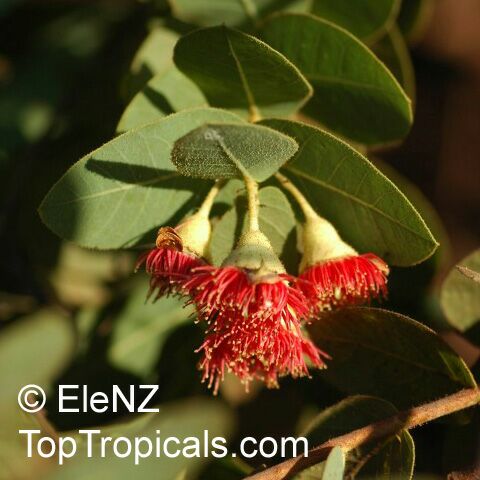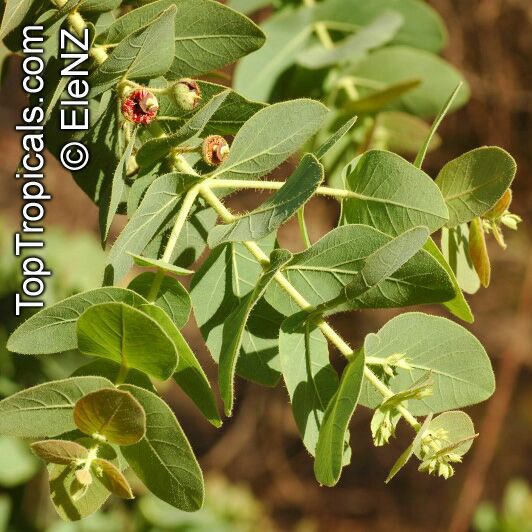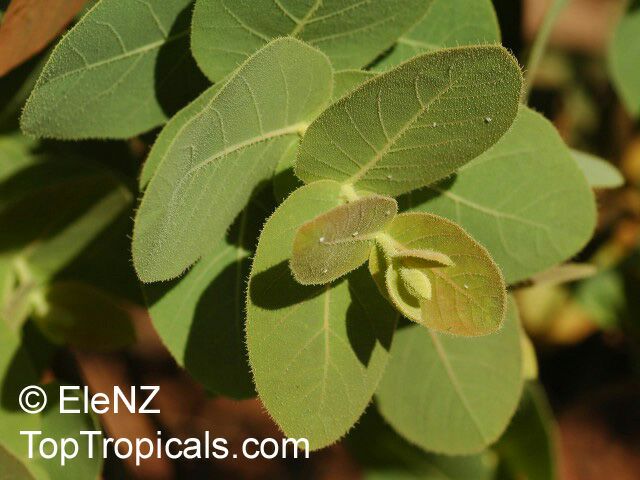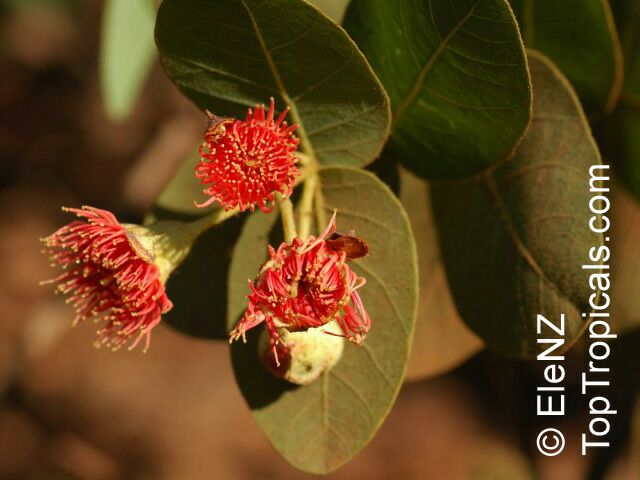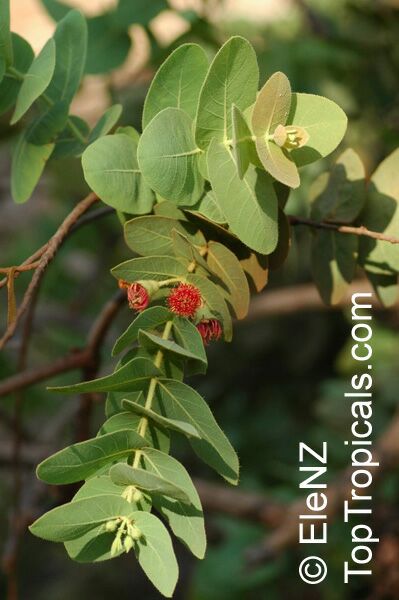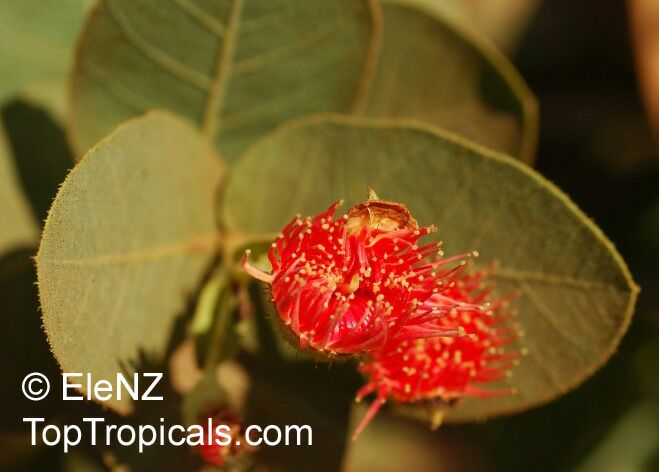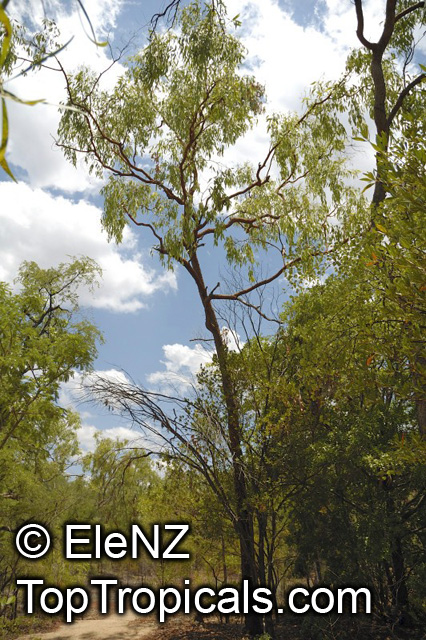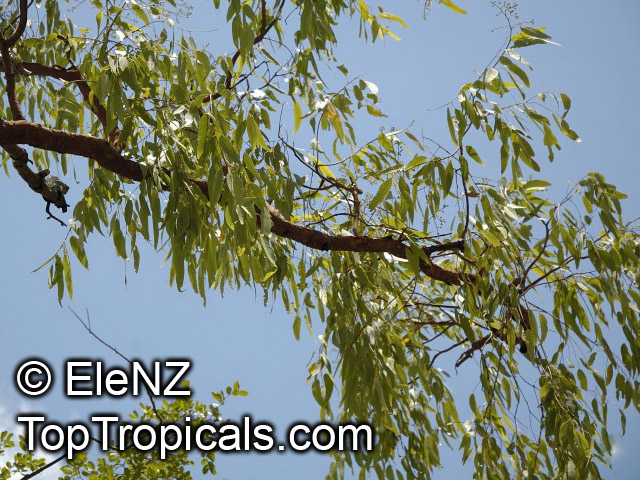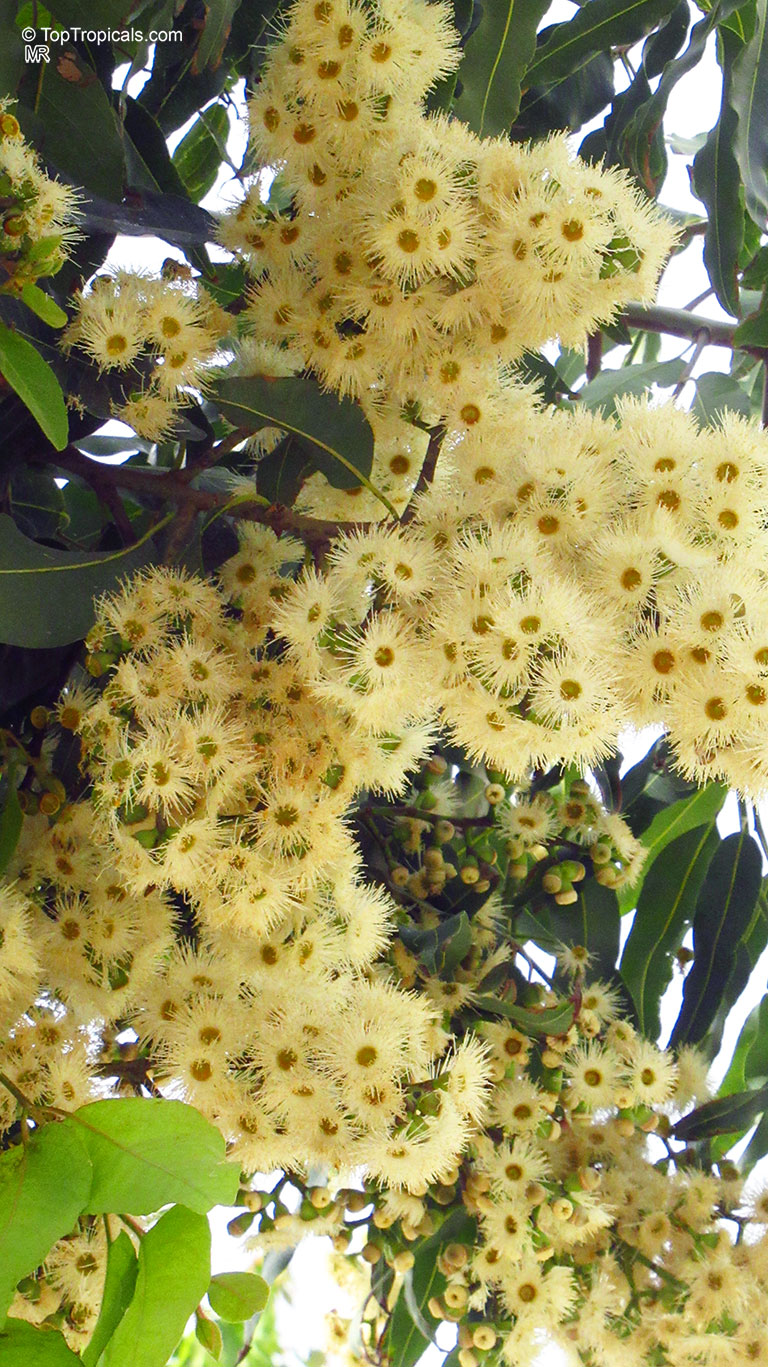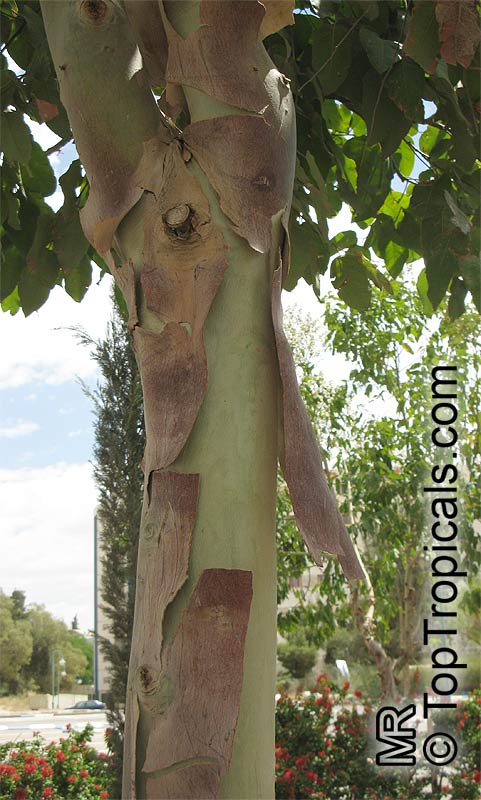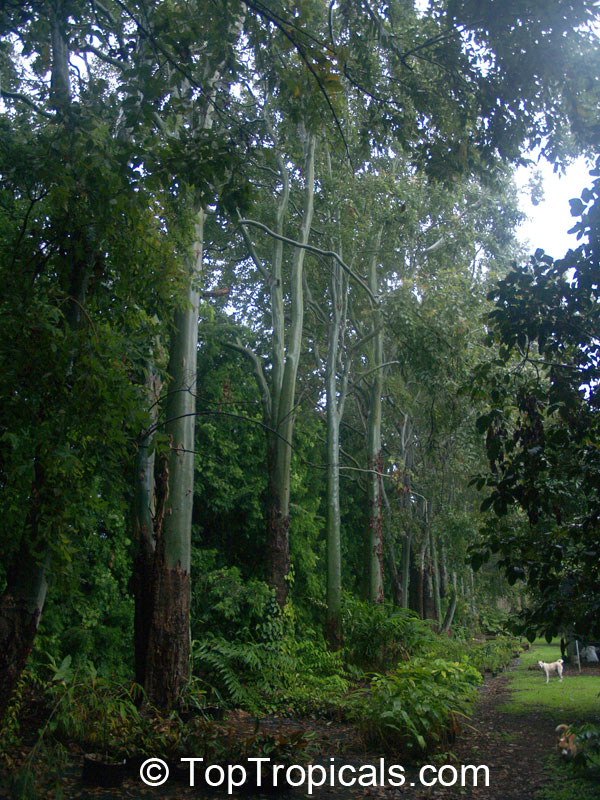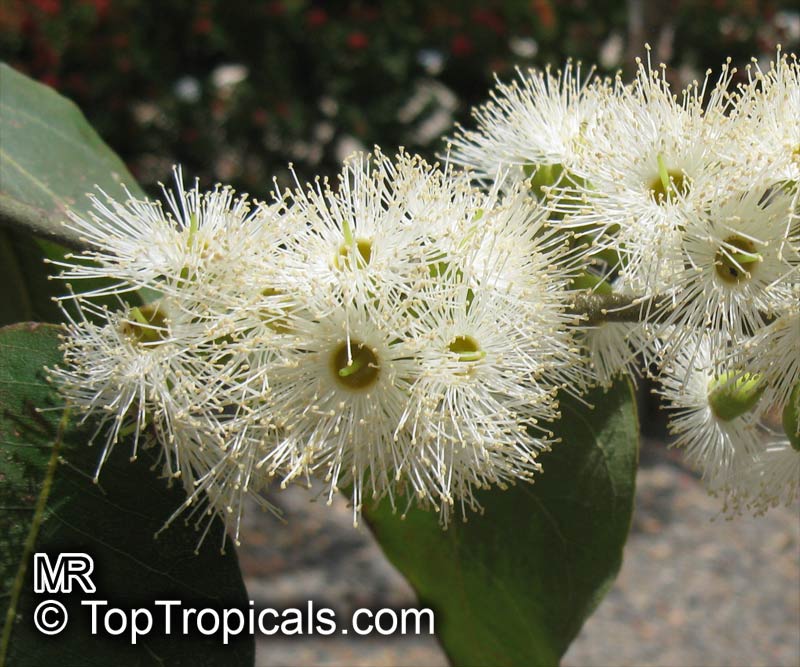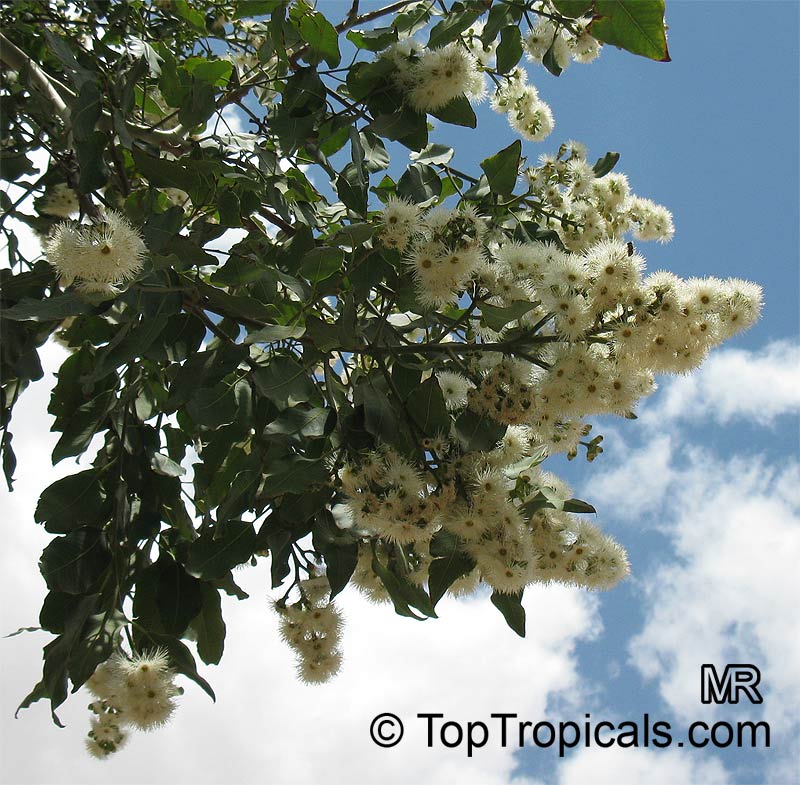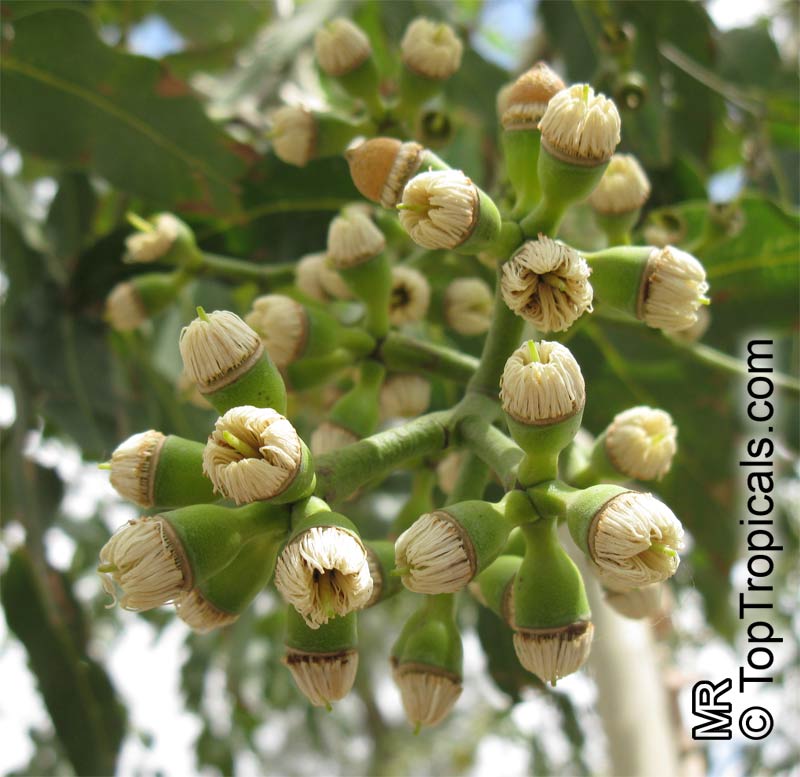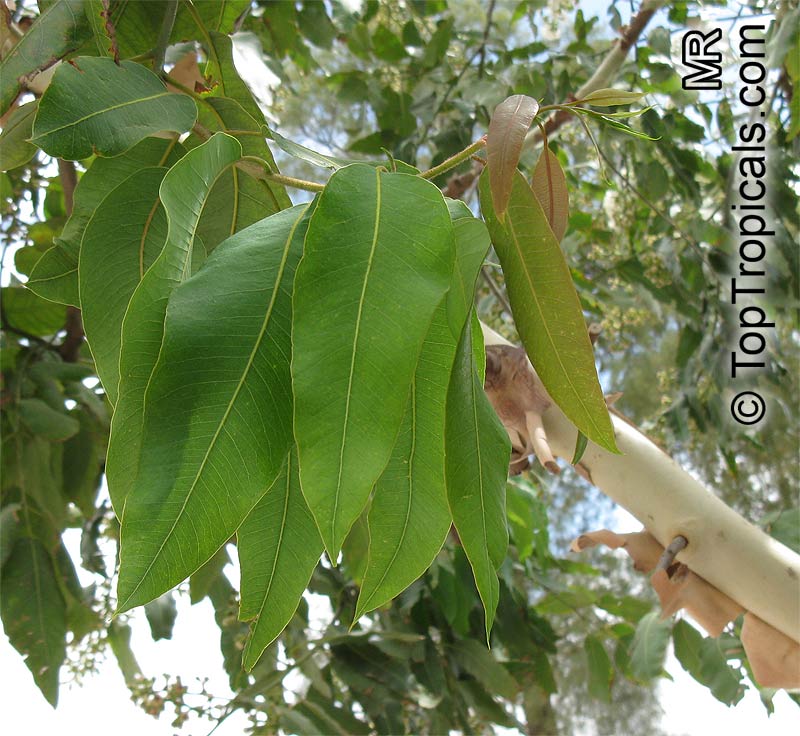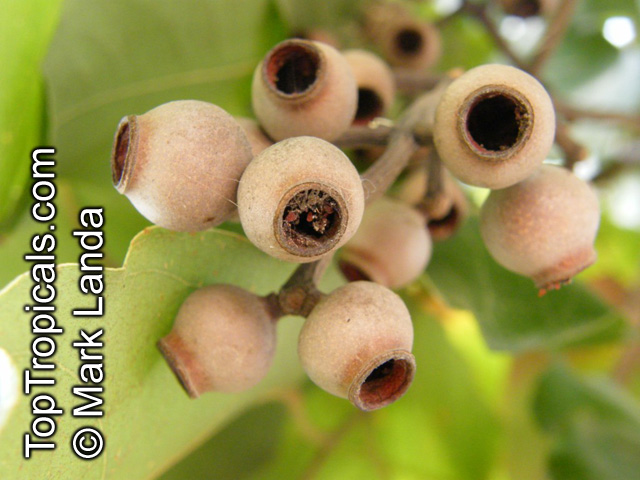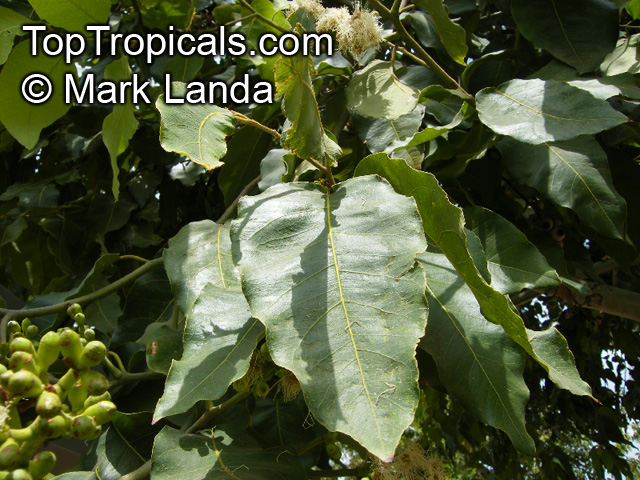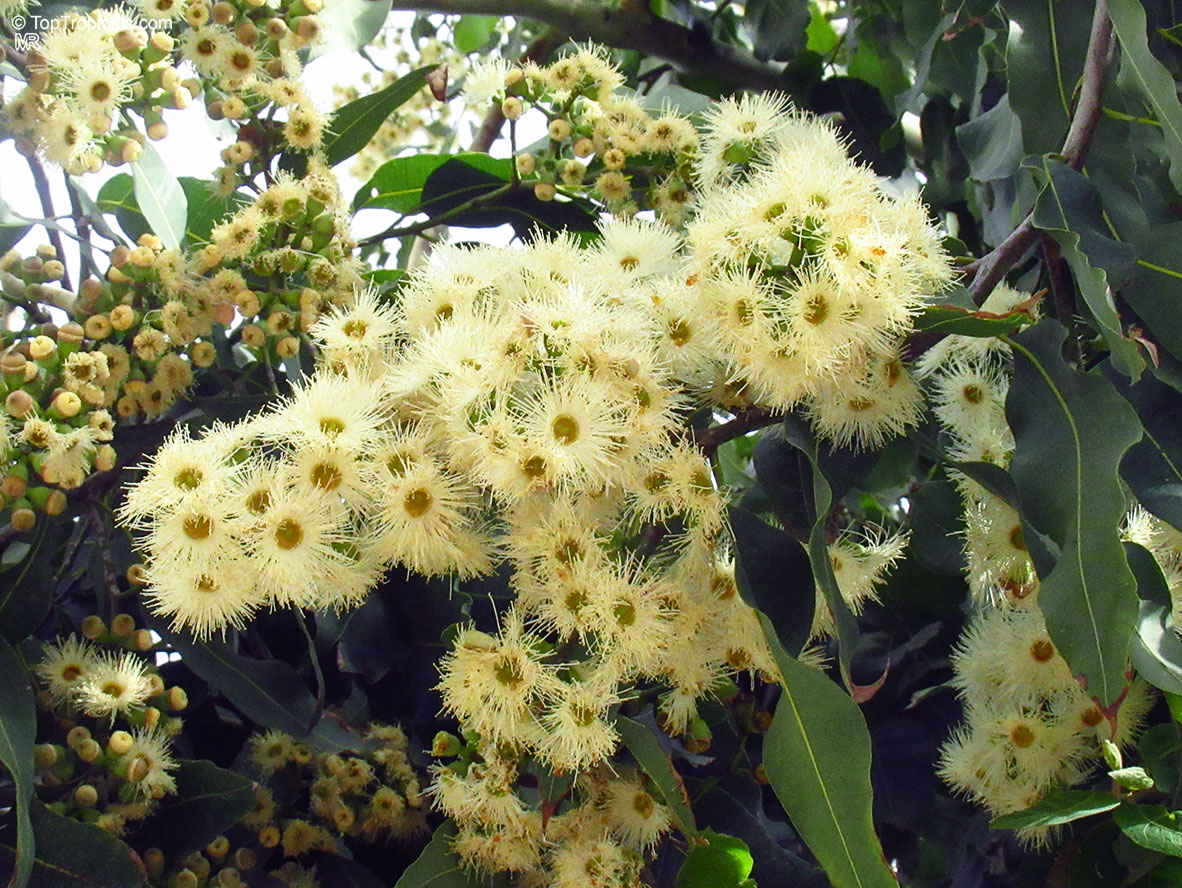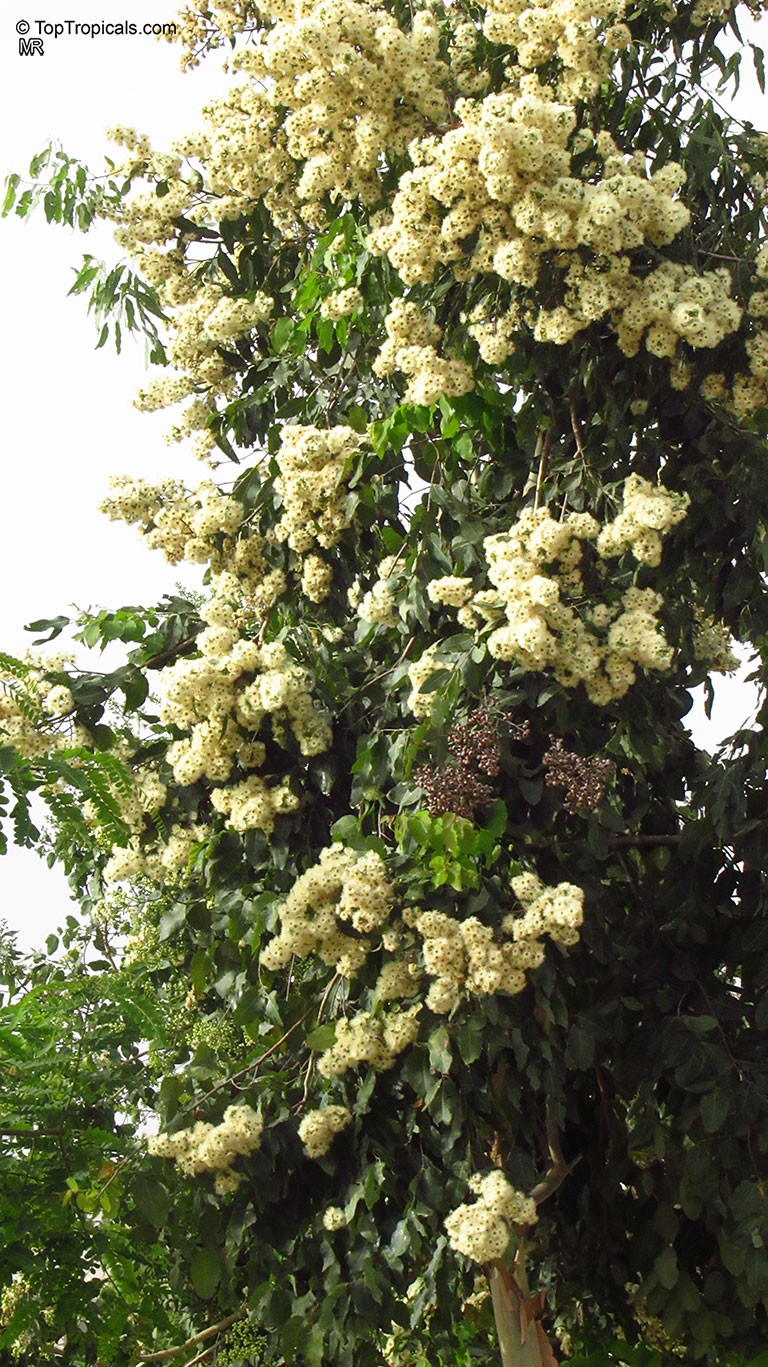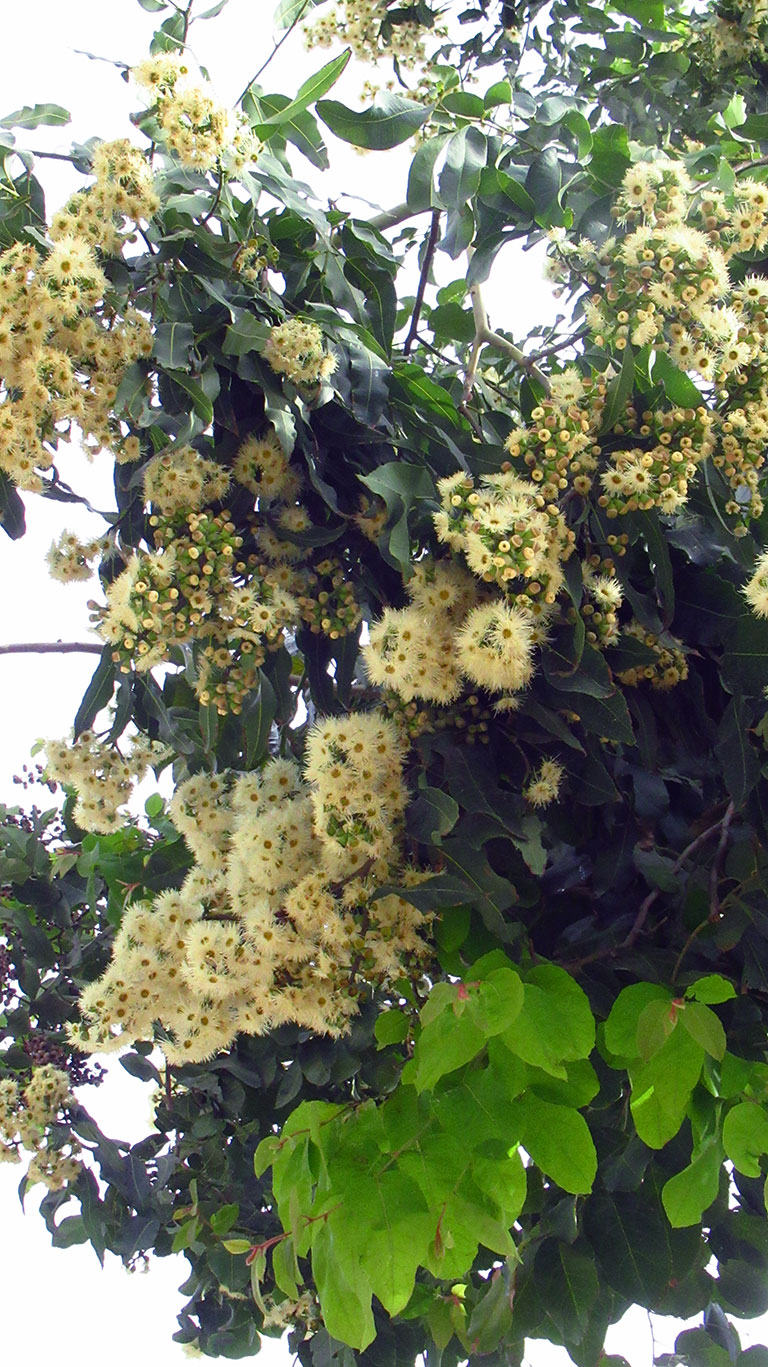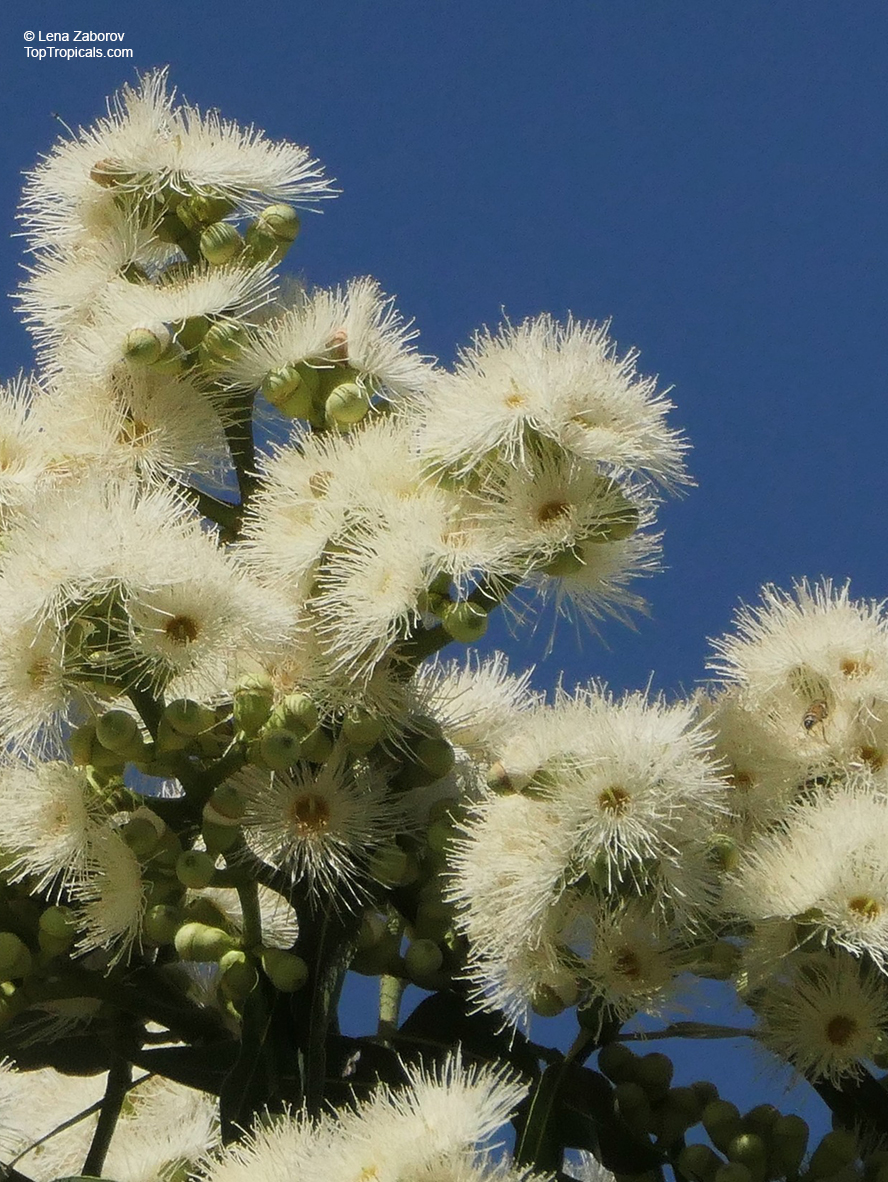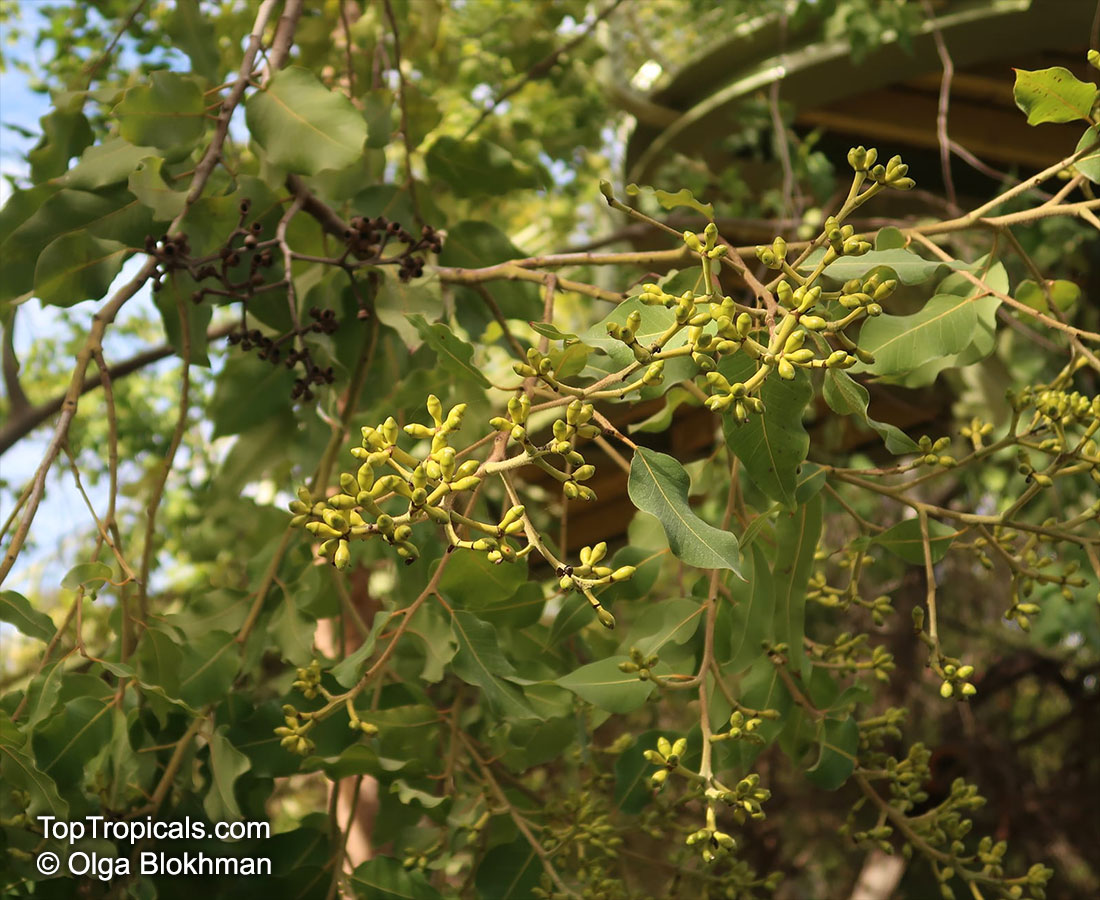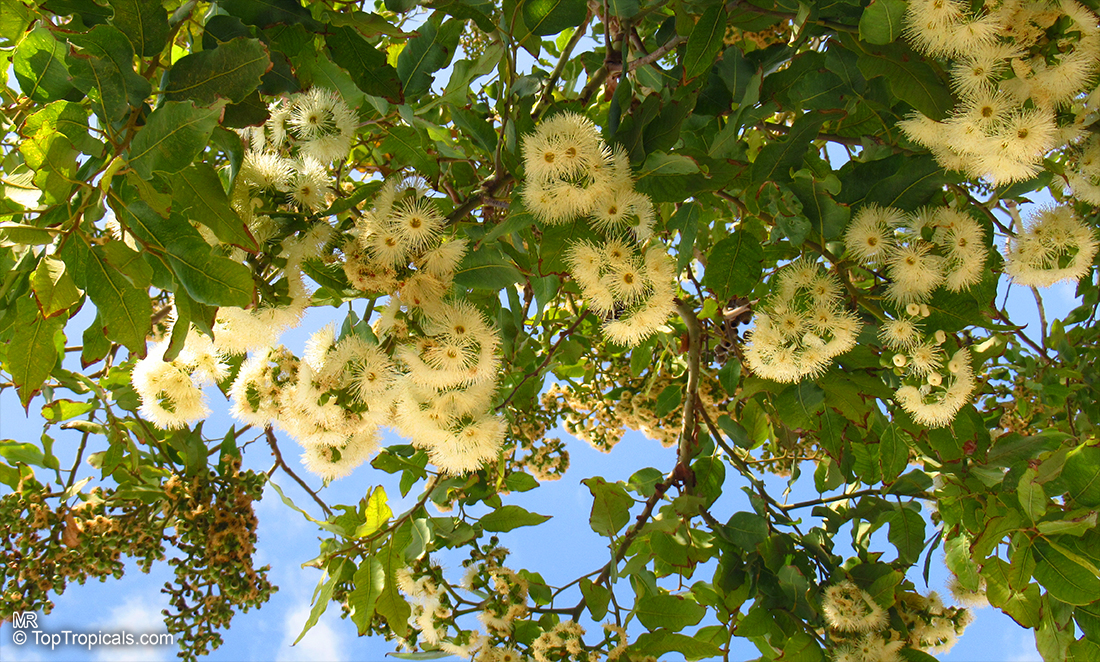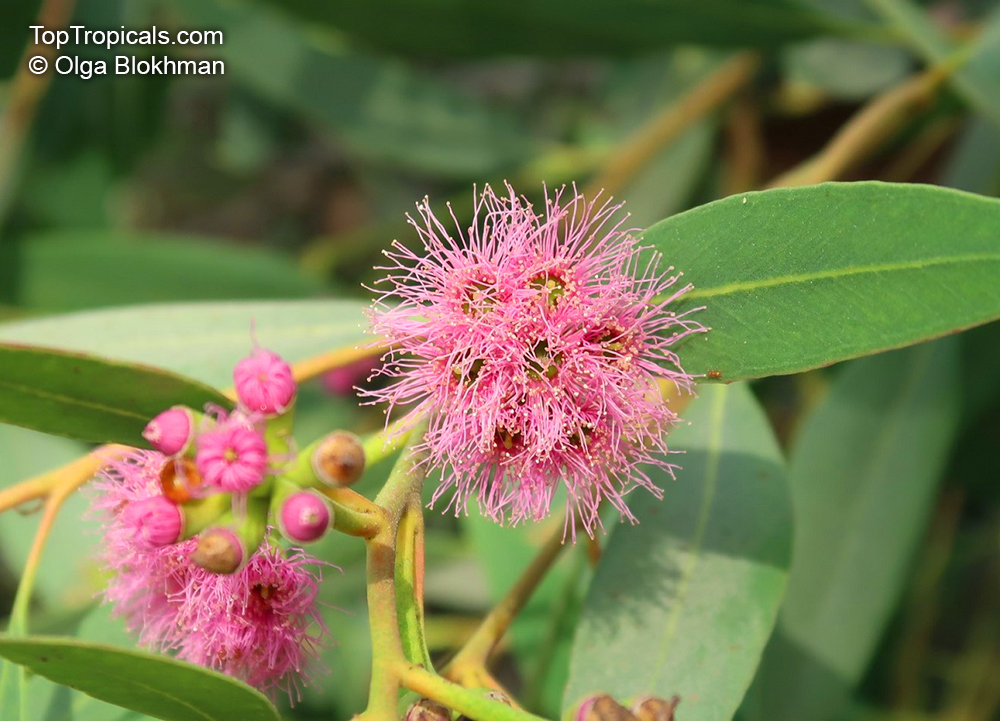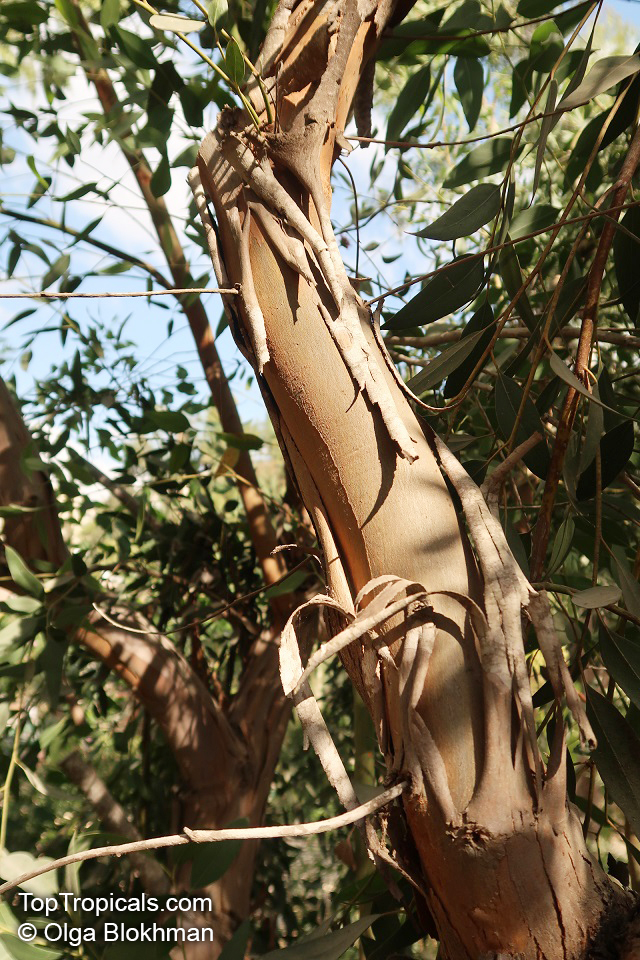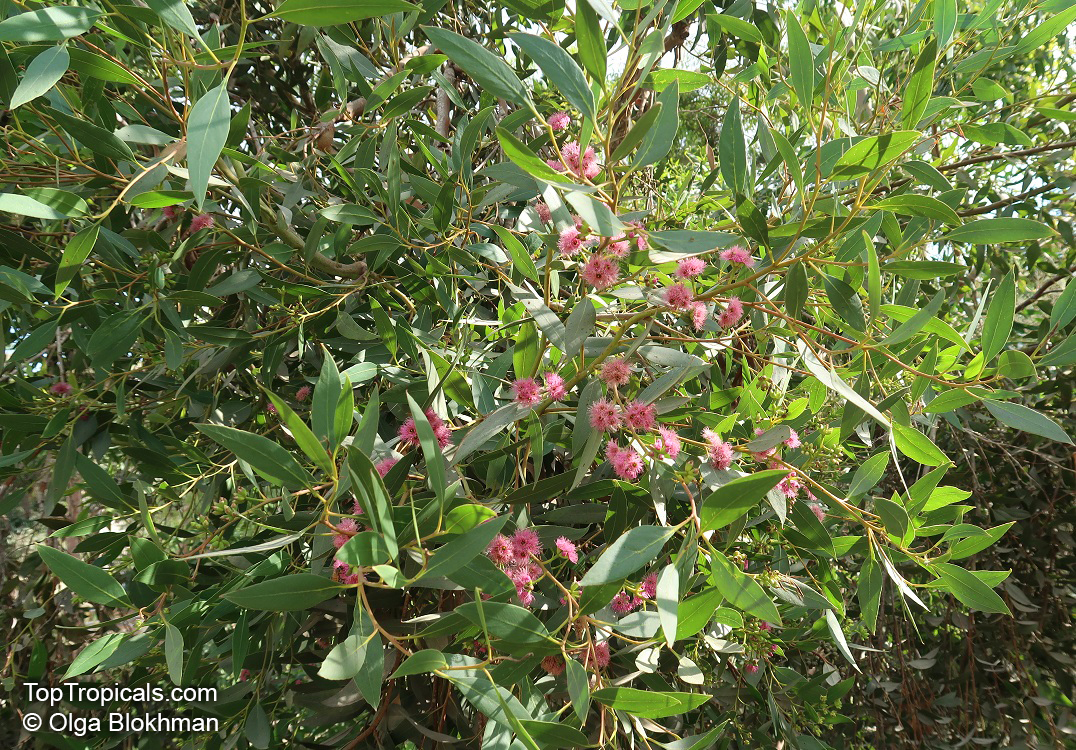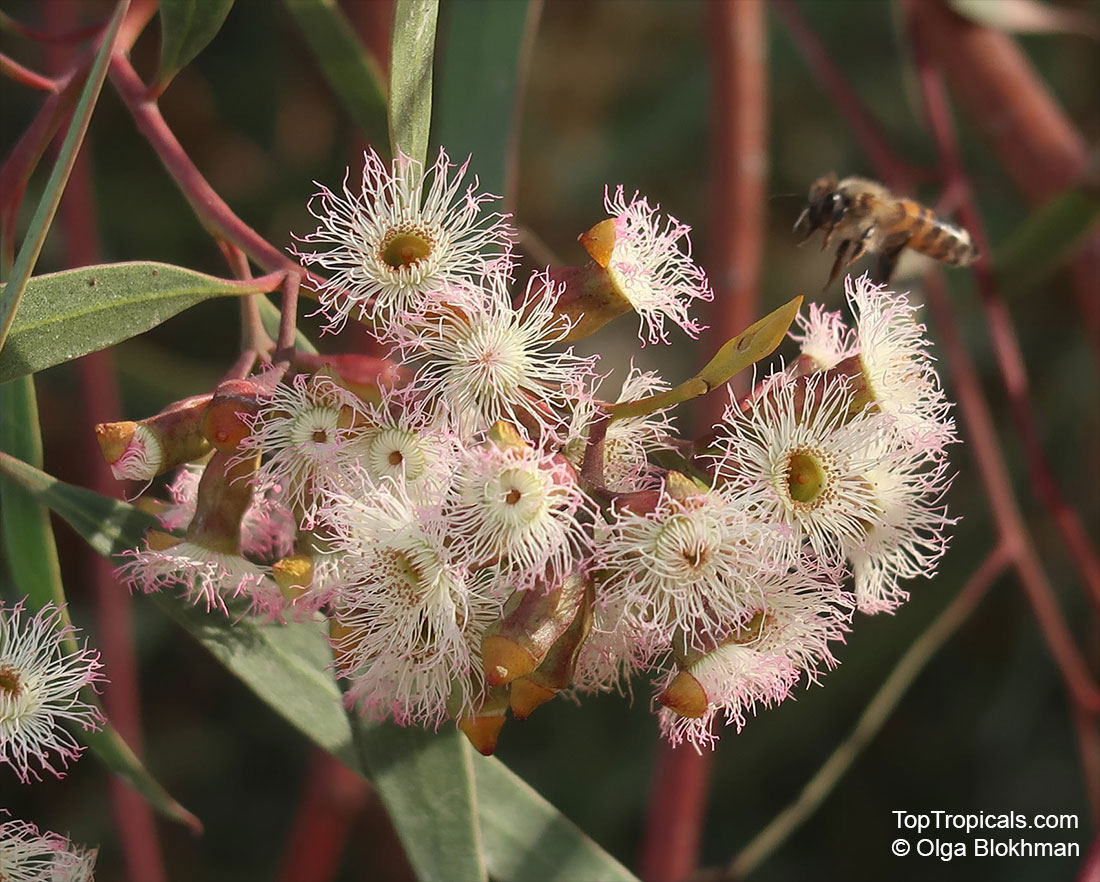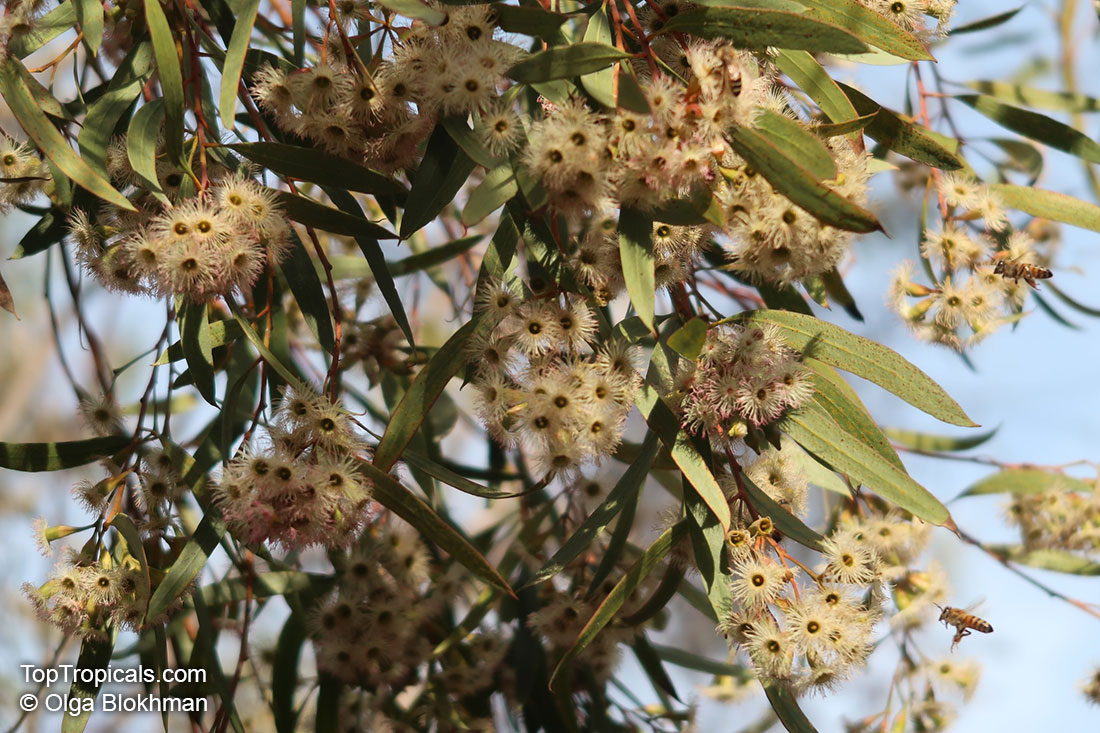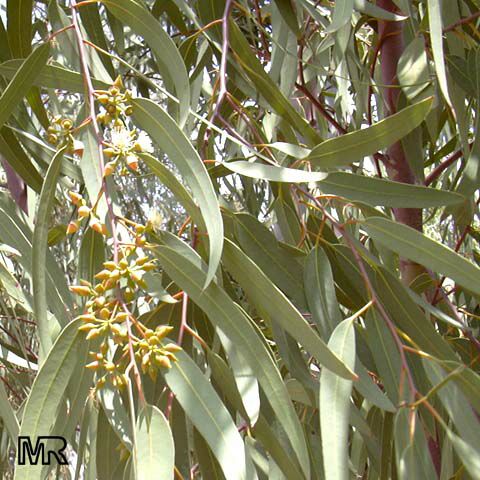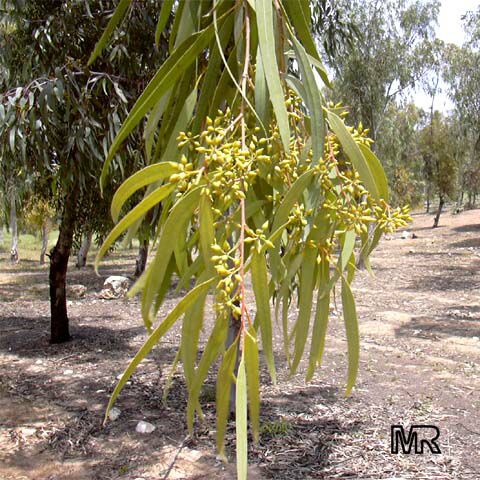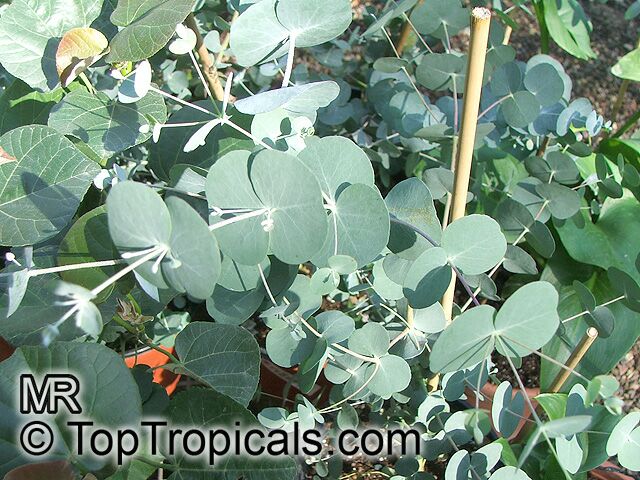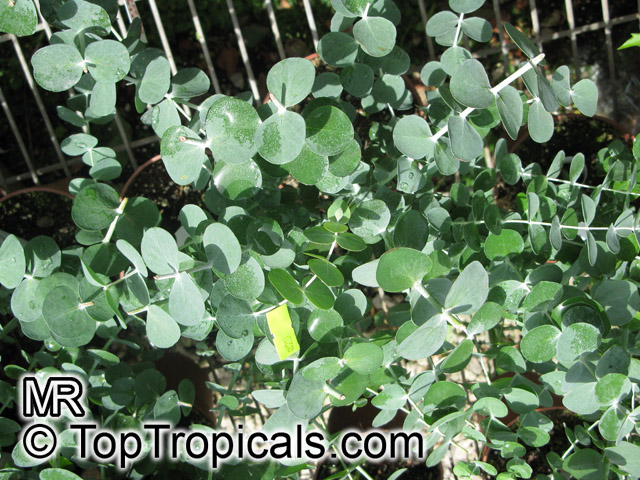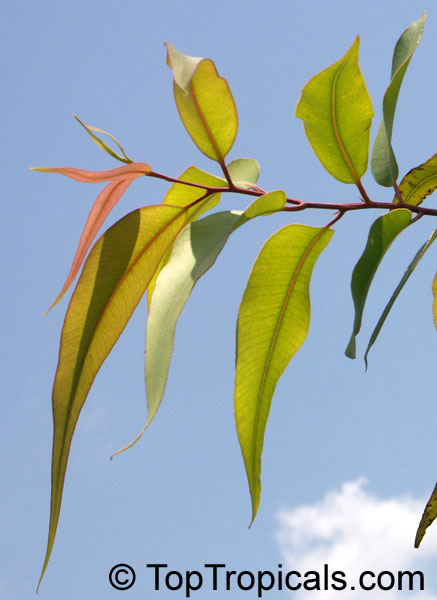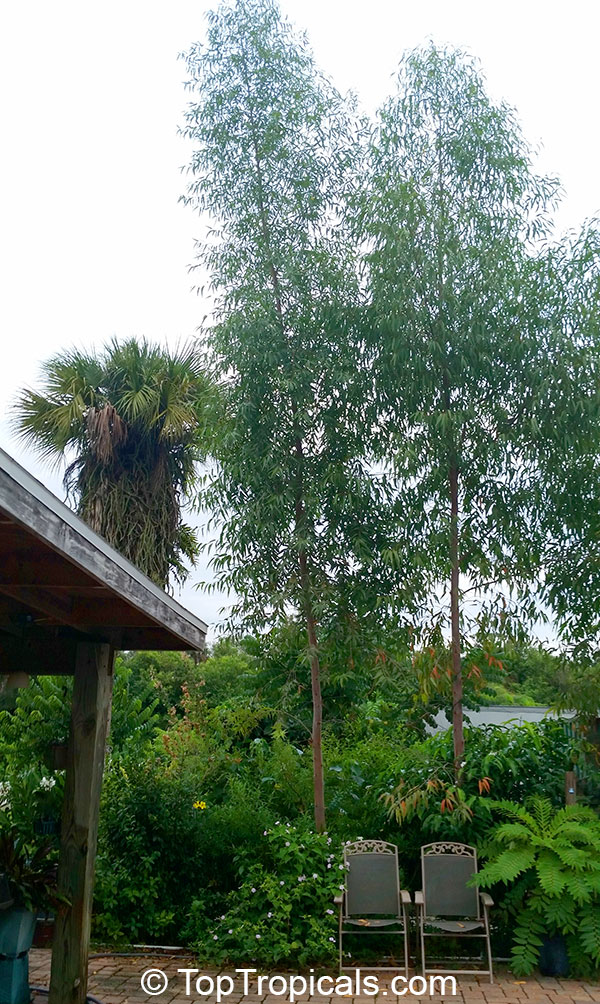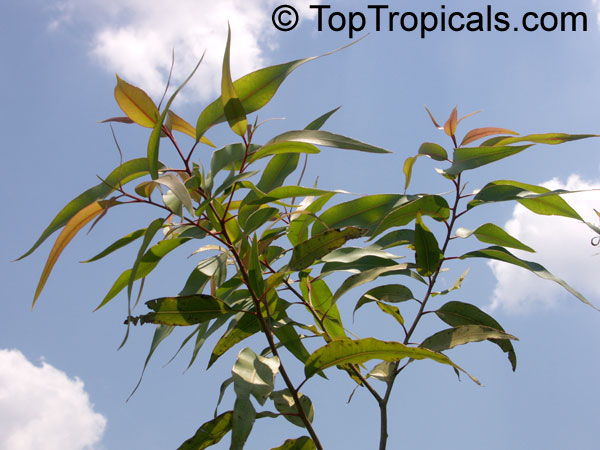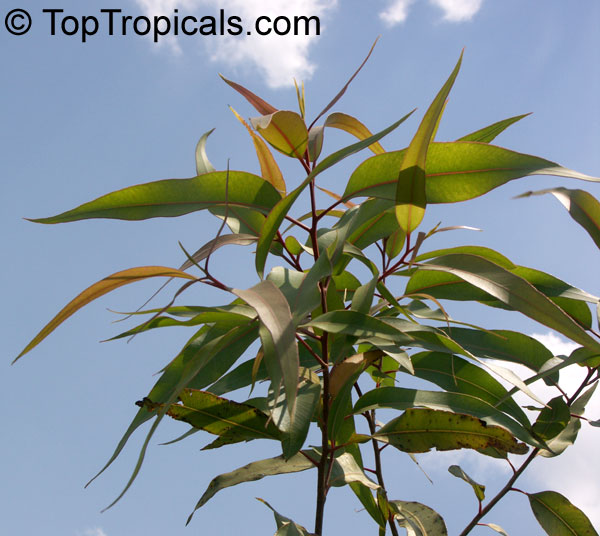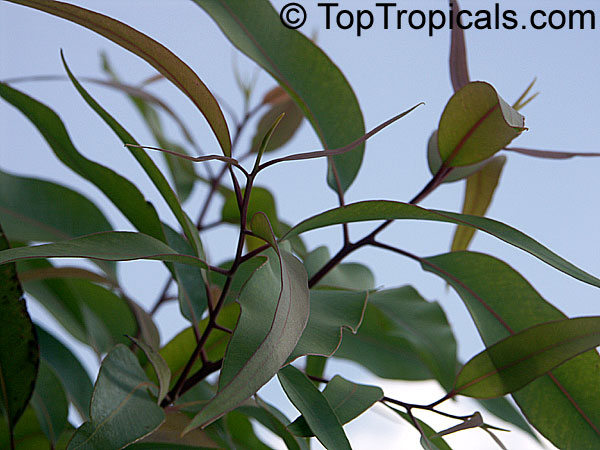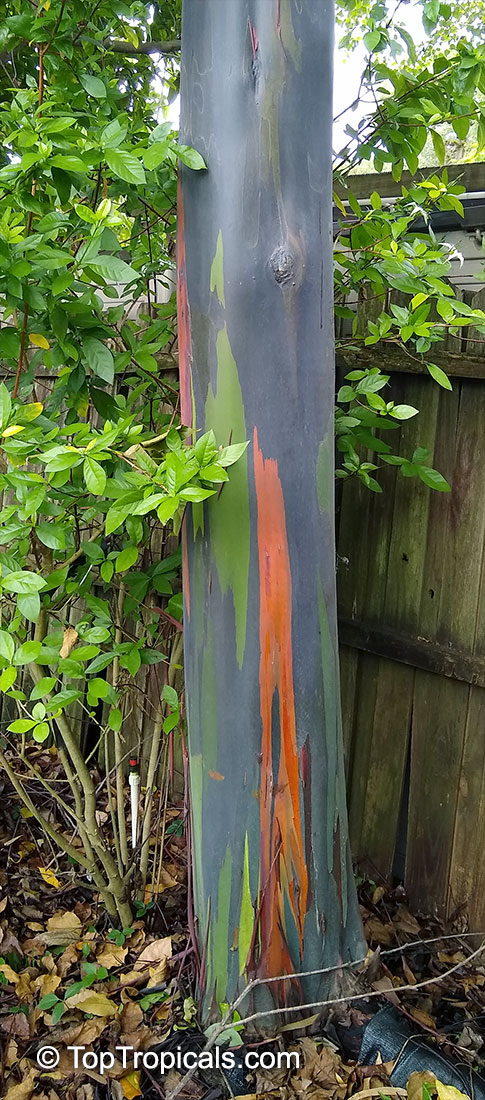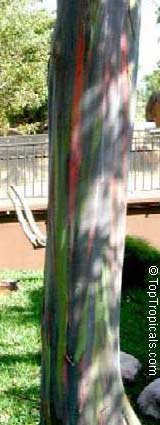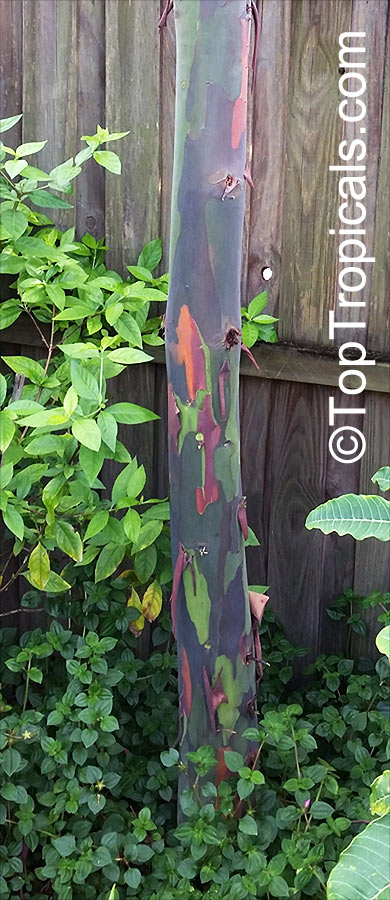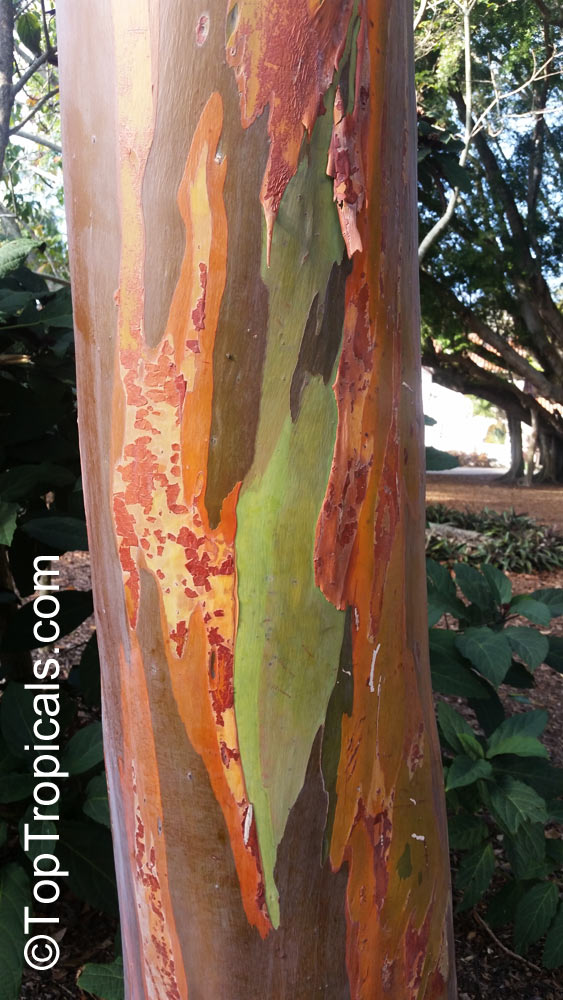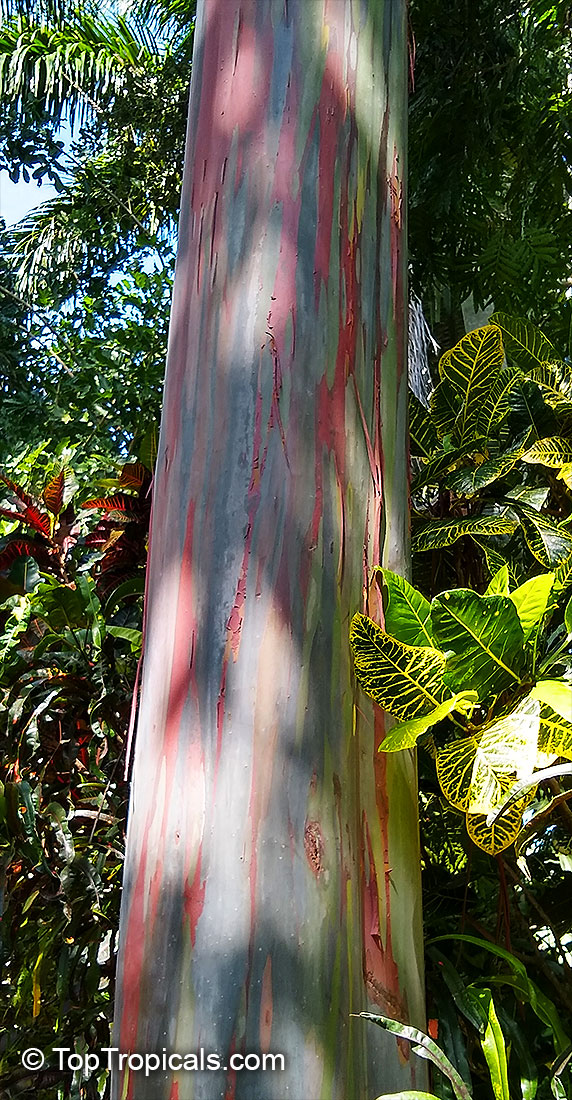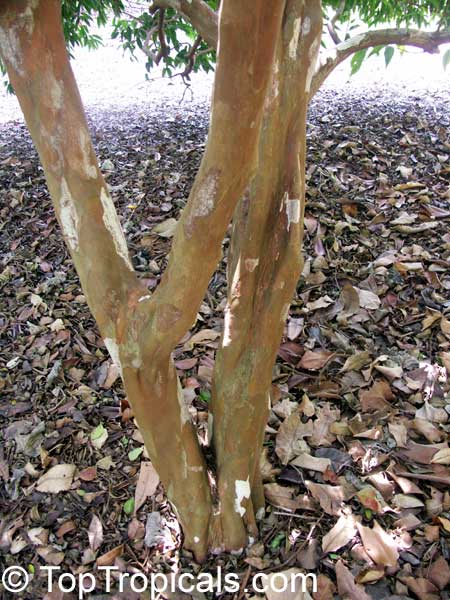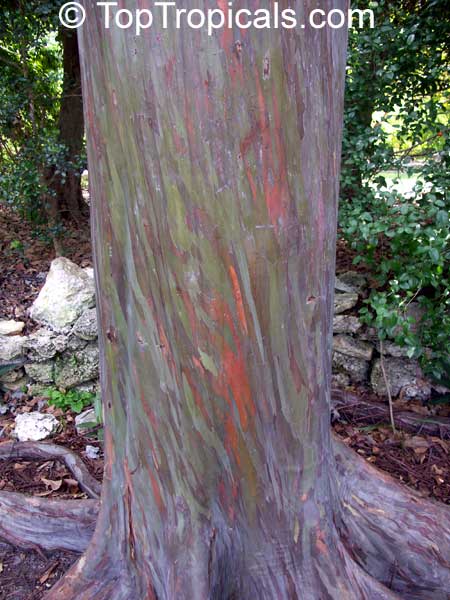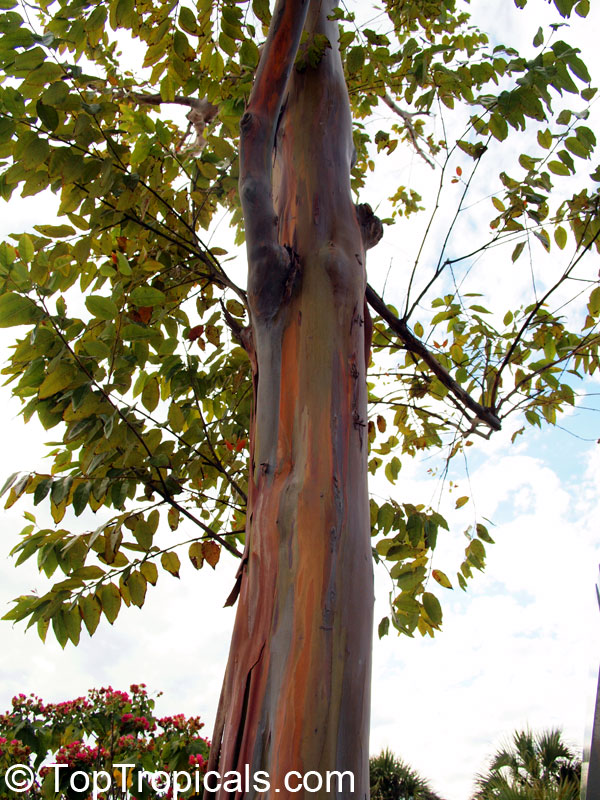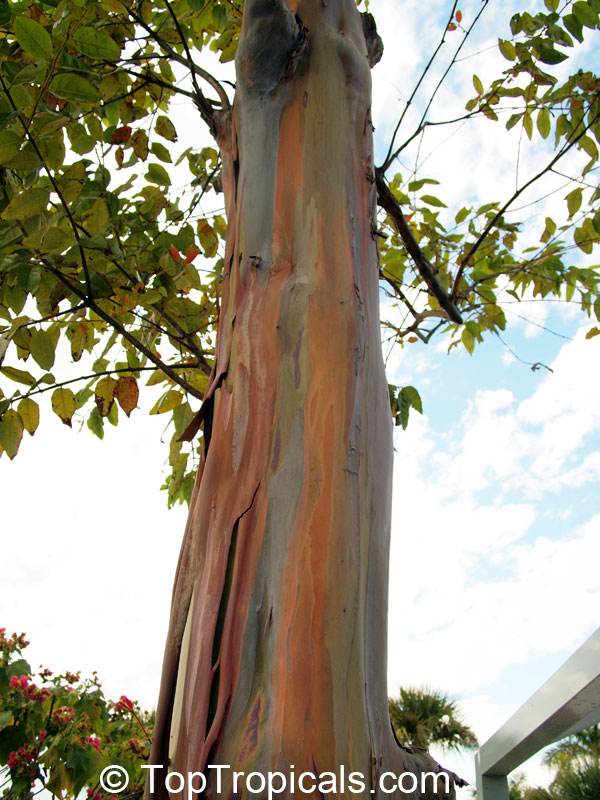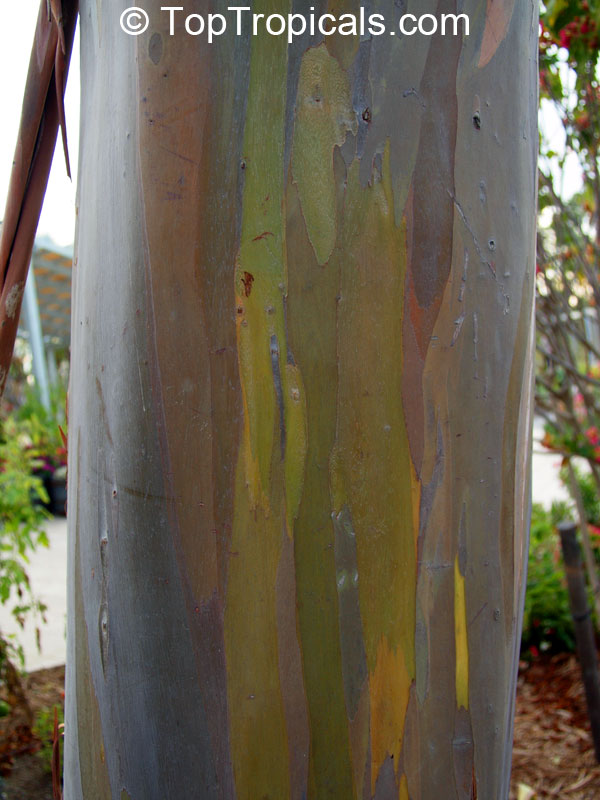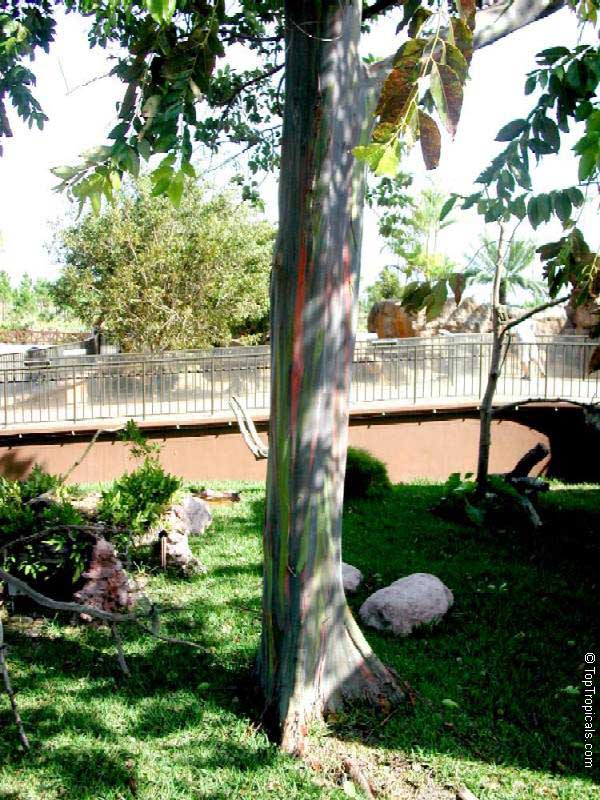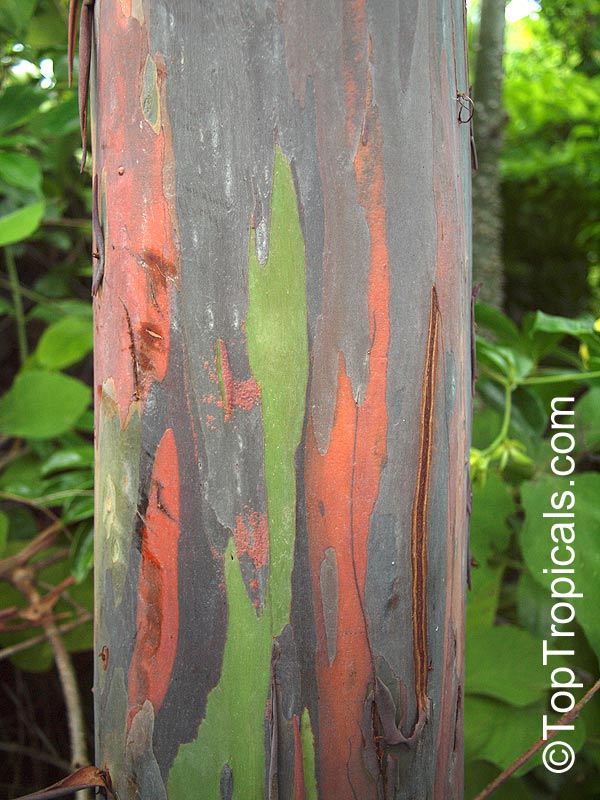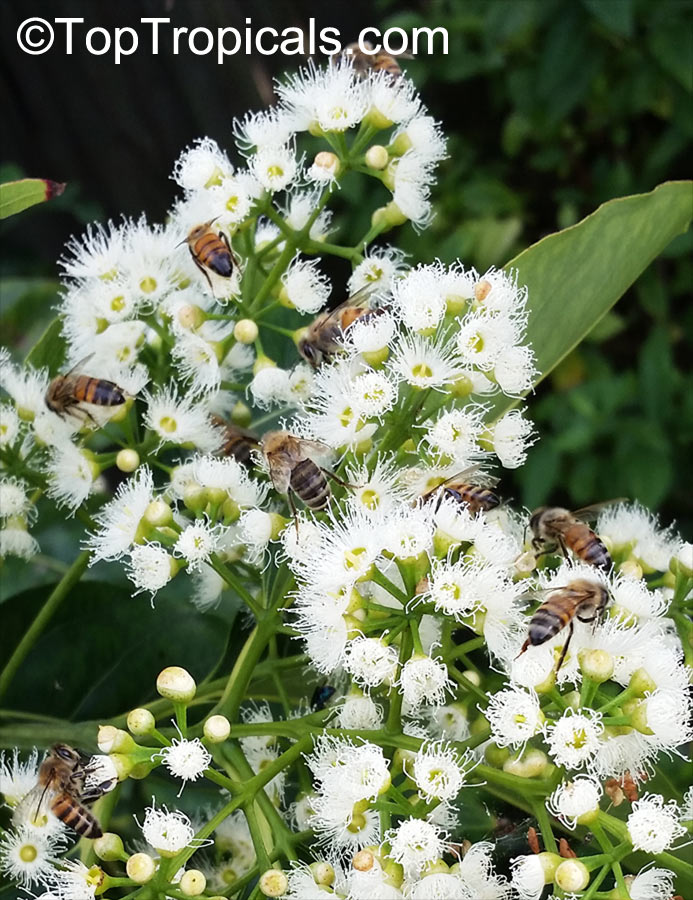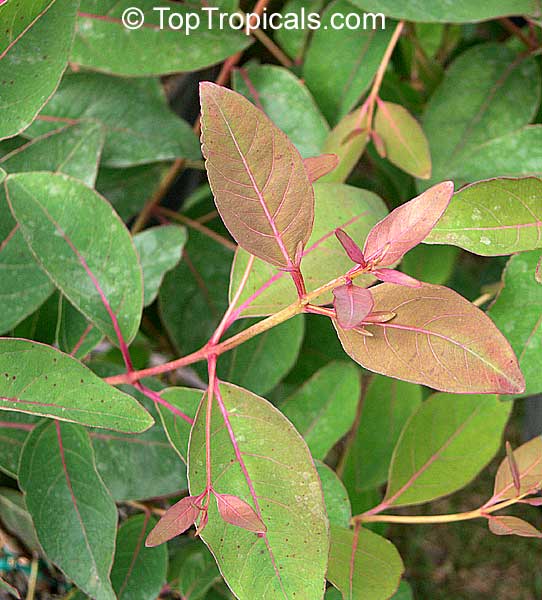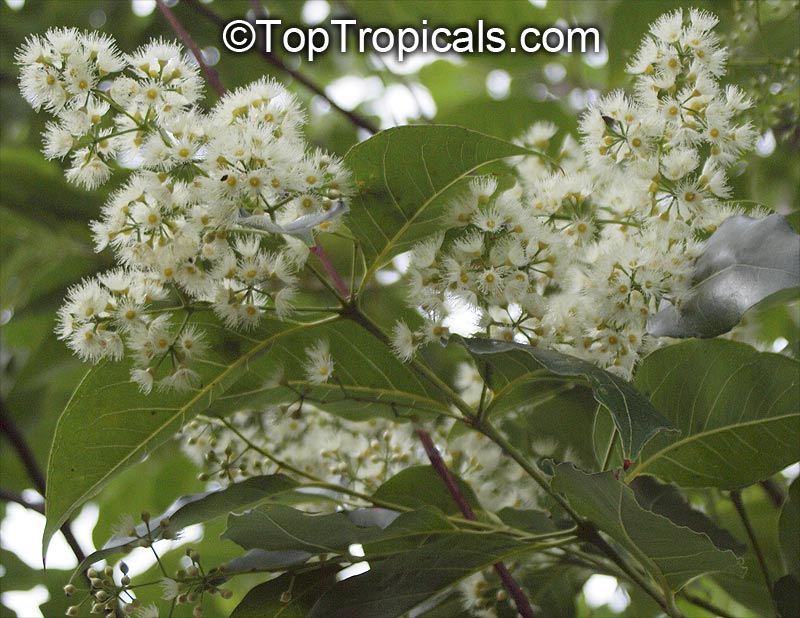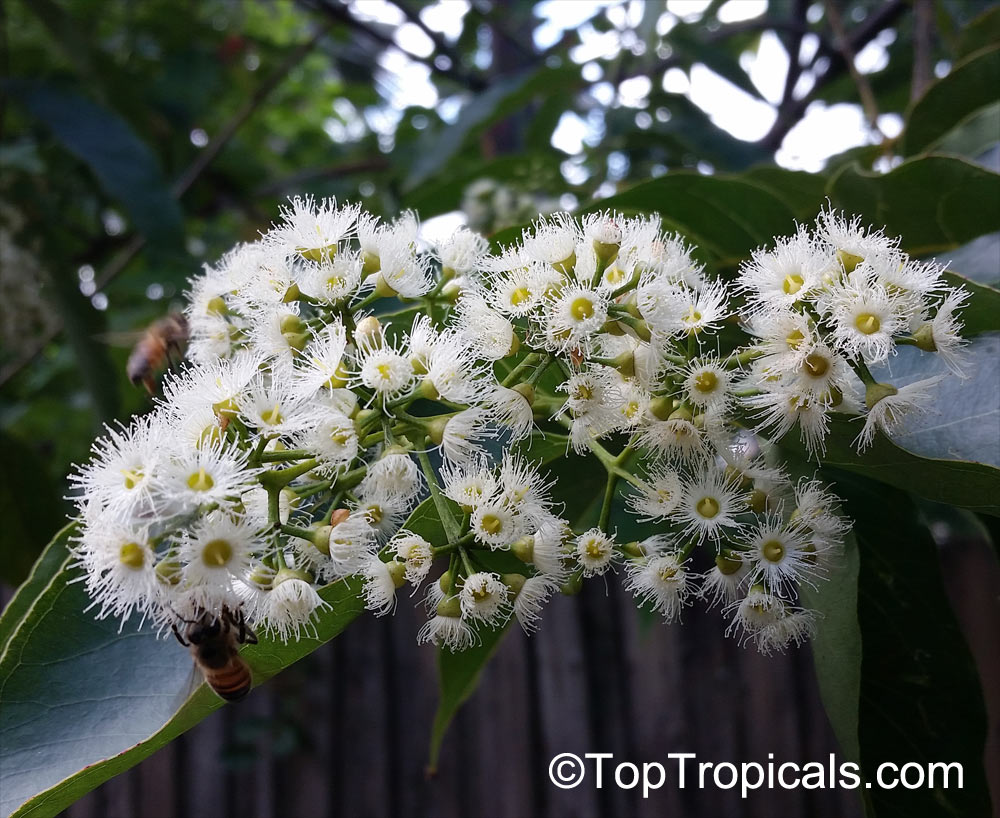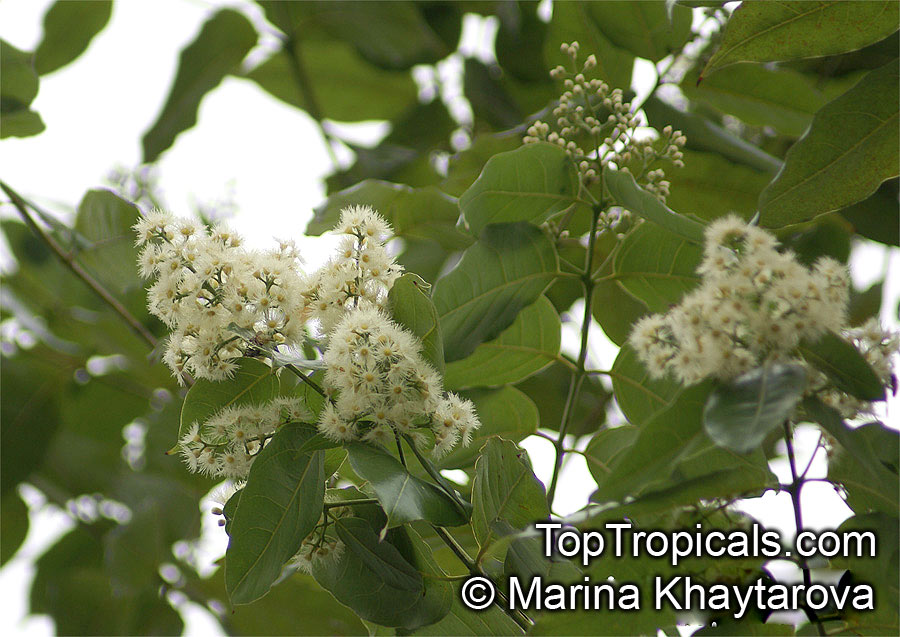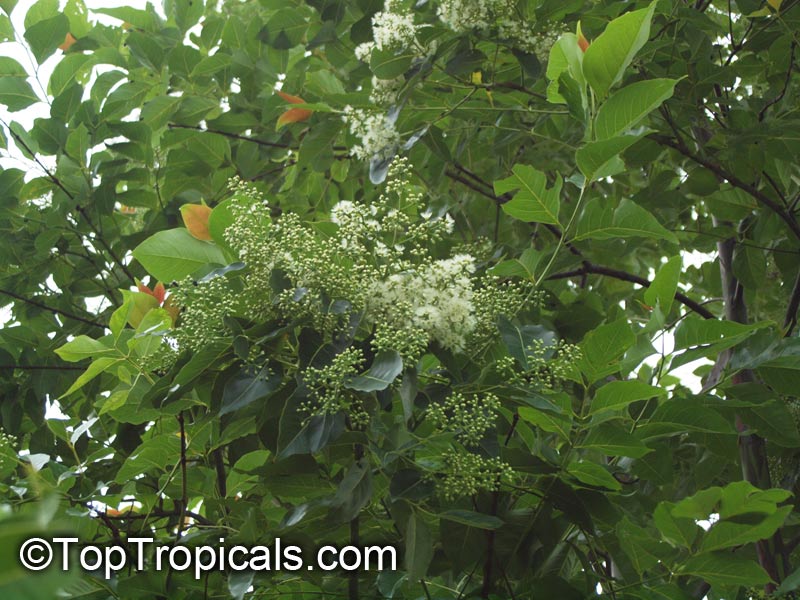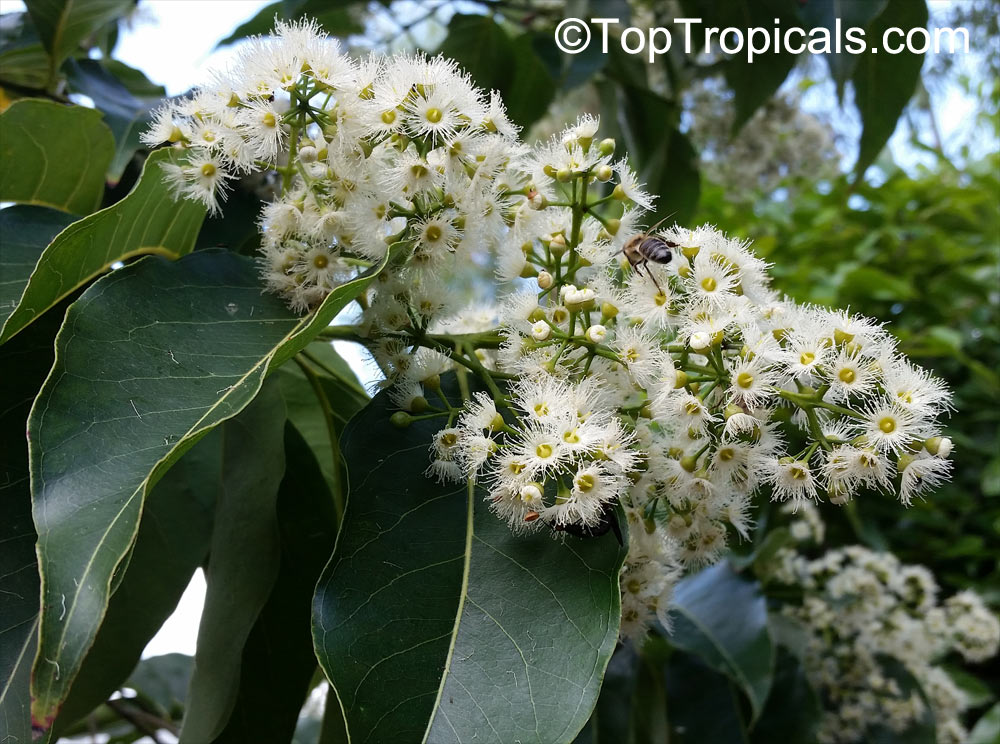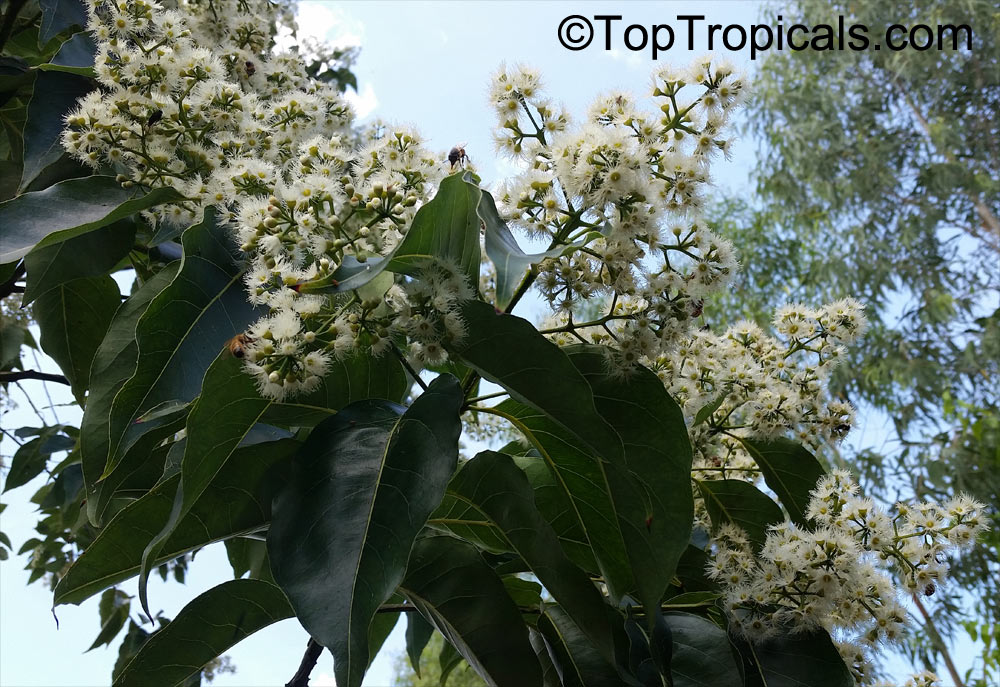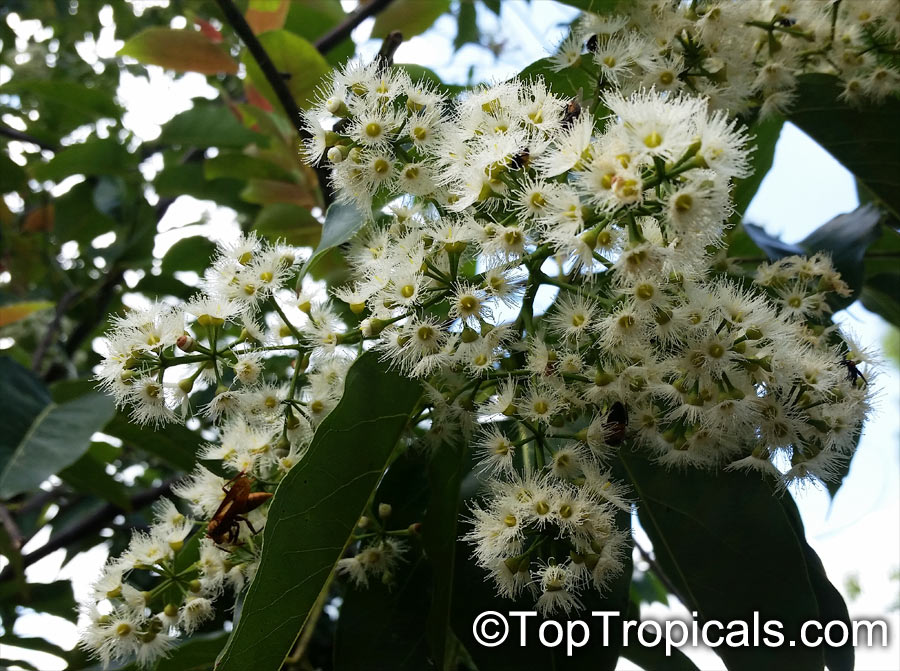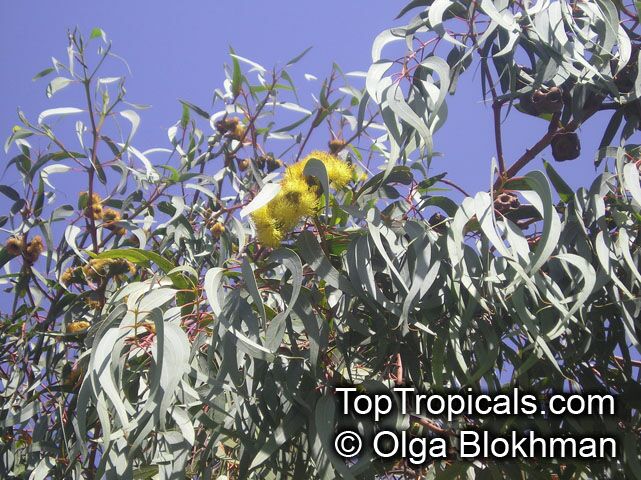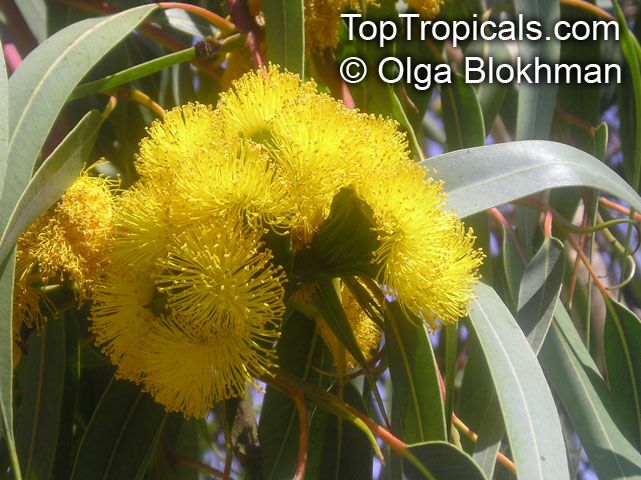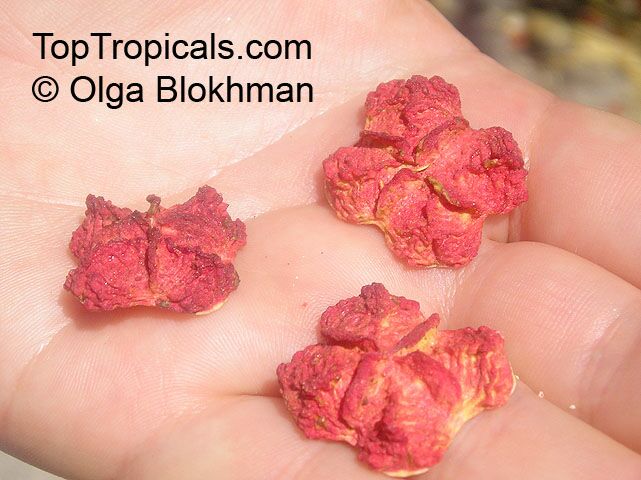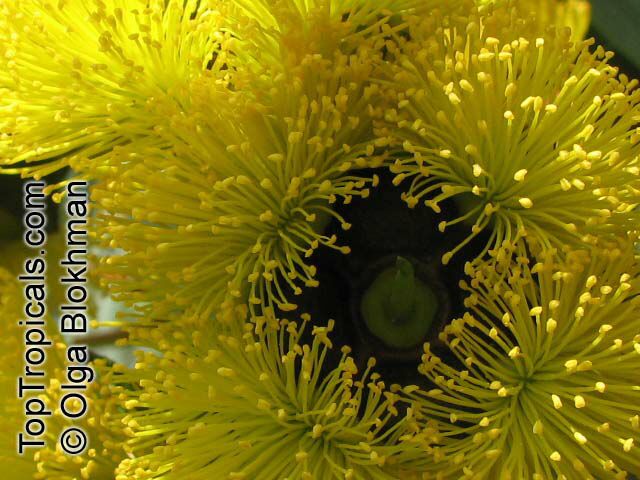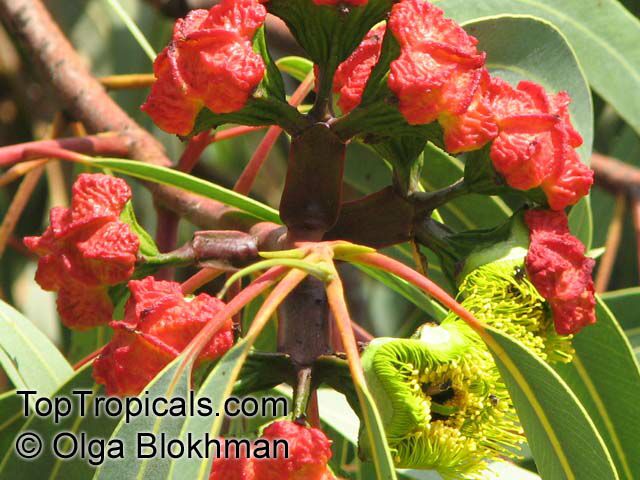Eucalyptus - Plant Encyclopedia Results
Top Tropicals Plant Encyclopedia
| Number of plants found: 18 | Next | 
|
Go to page: | 1 | 2 |
Botanical names: Corymbia setosa, Eucalyptus setosa
Common name: Rough-leaved Bloodwood
Family: Myrtaceae
Origin: Australia





Botanical names: Corymbia terminalis, Eucalyptus terminalis
Common name: Bloodwood
Family: Myrtaceae
Origin: Australia





Botanical names: Corymbia torelliana, Eucalyptus torelliana
Common names: Cadaga, Cadaghi, Gumtree, Torell's Eucalyptus
Family: Myrtaceae
Origin: Australia
Hardiness: 35°F





Corymbia torelliana has fibrous bark on the base of the trunk followed by smooth bark which is usually greenish. Flowers white in large corymbose panicles on the outside of the foliage.
Botanical name: Eucalyptus albopurpurea
Common names: Purple-flowered Mallee Box, Port Lincoln Mallee
Family: Myrtaceae
Origin: Australia






Lepisanthes amoena (formerly known as Syzygium amoenum) is an attractive evergreen shrub native to Southeast Asia. Growing to a height of 4 feet (1.2 m), it has glossy green oval leaves and emits a pleasant aroma. During the warmer months, it displays impressive bright pink flowers that captivate attention.
Lepisanthes amoena can be grown in a large container as long as it is kept sheltered from frost and other harsh weather conditions. If necessary, the pot should be brought inside or placed in a sheltered spot during the cold winter months. The pot should be filled with an insulated potting soil mix that is not overloaded with fertilizer and is not allowed to dry out completely. Fertilizers and growth stimulants can be used to encourage strong and healthy growth.
Lepisanthes amoena requires regular pruning, as this can help form its natural shape and promote better flowering. Care should also be taken not to overwater or allow the soil to get too wet, as this can cause root rot. It should also be provided with ample light and a humid environment.
This low maintenance, tropical shrub is ideal for garden or yard decoration. With the right amount of care and coverage for the roots, Lepisanthes amoena will blossom again year after year, displaying its impressive bright pink flowers.
Botanical name: Eucalyptus calycogona
Common names: Gooseberry Mallee, Square fruited Mallee
Family: Myrtaceae
Origin: Australia





This small, multi-stemmed tree grows to a maximum of 10-20 feet tall, with a spread of 8-15 feet. It features a rounded canopy and attractive grey-green foliage. The foliage is covered in clusters of white or off-white bell-shaped blooms during spring and summer, which mature to pink. Its blooms are attractive to butterflies and hummingbirds, making it popular for wildlife gardens.
Eucalyptus calycogona (Gooseberry Mallee) is hardy in USDA Zones 9-11 and prefers full sun. The tree thrives in well-drained, moist soils, though it can tolerate a wide variety of soil types. Established plants require little supplementary water, though in arid climates irrigation may be required. Pruning may be necessary to maintain the desired shape and size. Eucalyptus calycogona can be grown in containers and may be brought indoors for winter protection in colder climates. When grown in a pot and brought indoors, keep in a warm spot and water regularly.
Botanical name: Eucalyptus camaldulensis
Common name: River Red Gum
Family: Myrtaceae
Origin: Australia






It is one of the most widely planted eucalypts in the world. The tree produces welcome shade in the extreme temperatures, and plays an important role in stabilising river banks, holding the soil and reducing flooding. The species is named for a private estate garden near the Camaldoli monastery near Naples (L'Hortus Camaldulensis di Napoli), from where the first specimen came to be described. Red gum is so named for its brilliant red wood, which can range from a light pink through to almost black, depending on the age and weathering. Cold hardy, very fast growing. Like all eucalyptus trees it can grow as much as 6-12 ft per season.
Botanical name: Eucalyptus cinerea
Common names: Argyle Apple, Silver Dollar Gum
Family: Myrtaceae
Origin: Australia






Trees are usually mature in the juvenile leaf phase but can often produce intermediate and adult leaves which are stalked, broad-lanceolate to 11 x 2cm, concolorous, greyish-blue and glaucous. Foliage has the smell of menthol.
Drought-tolerant; suitable for xeriscaping.
Botanical names: Eucalyptus citriodora, Corymbia citriodora
Common names: Lemon Eucalyptus, Citron-scented Gum, Lemon Scented Gum
Family: Myrtaceae
Origin: Australia








Lemon Eucalyptus (Eucalyptus citriodora) is a fast-growing evergreen tree native to Queensland, Australia. It is known for its strong lemony scent when the leaves are crushed and for the lemon-scented oil produced from its leaves, which is used in perfumery. The trunks and branches of this species are powdery white to pinkish and the trunks are usually very straight. In nature, these trees can reach heights of 75-100 ft, but their size can be easily controlled through selective pruning and container size when grown in a greenhouse setting. The white blooms of Lemon Eucalyptus are not particularly distinctive, but they are followed by woody urn-shaped capsules about half an inch wide.
Lemon Eucalyptus is best suited to USDA Zones 8-11 and can survive temperatures as low as the mid-20s Fahrenheit for a short time. It thrives in full sun and well-draining soil, and should be watered moderately. In the summer months, water occasionally, and in the winter, water only once a month. Fertilize twice a year, once before the new growth flush in spring and again in early summer. Pruning can be done in late spring to control size and for ornamental shaping. Both young and mature specimens display their ornamental foliage with aromatic fragrance.
In addition to its ornamental qualities, Lemon Eucalyptus has a number of practical uses. The leaves can be used in teas, tinctures, and as a culinary herb for fish and chicken dishes. The plant has antibacterial, antifungal, antiparasitic, and antiviral properties and can be used for antiseptic purposes. Lemon eucalyptus oil is also widely used in aromatherapy, such as in oil diffusers or baths.
Lemon Eucalyptus is an attractive and useful plant to have in the garden or landscape. It provides a number of benefits, including its impressive height, fragrant foliage, healing oil, and ornamental qualities. Just be sure to protect it in colder and humid climates, as it is still susceptible to damage in these conditions.
Botanical name: Eucalyptus deglupta
Common names: Rainbow Eucalyptus, Mindanao Gum, Rainbow Gum
Family: Myrtaceae
Origin: Philippines Native, Papua New Guinea








Eucalyptus deglupta, also known as Rainbow Eucalyptus, is a tall, columnar tree native to the Philippines and Papua New Guinea. It is known for its striking peeling bark that displays a range of colors, and it can grow up to 200 feet tall in its natural habitat, though it typically averages around 80 feet. This species is fast growing and prefers humid, cooler tropical climates. It thrives in USDA Zone 10-11, making it suitable for outdoor cultivation in Florida and southern California. It thrives in full sun and moist soil, and is tolerant of flooding.
To care for Eucalyptus deglupta, fertilize with an organic fertilizer in the spring and summer, and cut back for size or shape control in the spring before growth starts. Prune away dead or damaged branches anytime. If growing the plant in a pot in a colder region, keep the soil moist, use ample drainage, and provide supplemental lighting if needed. Fertilize with a balanced fertilizer and support the larger trunk if grown indoors. This tree is planted for its beautiful bark and stately appearance. Its leaves have a pleasant, spicy aroma due to their essential oils.
Recommended Fertilizer: SUNSHINE Robusta - Rapid Growth Booster
This item can not be shipped. Pick up only. We can provide local delivery around Ft. Myers or Sebring, Florida. Contact us for an estimate. Non-pickup orders are subject to restocking fees.
Recommended Fertilizer: SUNSHINE Robusta - Rapid Growth Booster
Botanical name: Eucalyptus erythrocorys
Common name: Red-cap Gum
Family: Myrtaceae
Origin: Australia






Eucalyptus erythrocorys is one of the most spectacular of the eucalypts when in flower. Small, bushy tree has very dark green foliage and a white trunk. It has bright red caps that reveal yellow flower clusters when blooming throughout the year. The foliage of nearly all species has a strong pungent odor similar to menthol.
| Next |  |
Use link to repeat this search:
https://toptropicals.com/cgi-bin/garden_catalog/cat.cgi?find=Eucalyptus&search_op=and&keyword_op=and&language=e&number=10
&no_change_lang=1&user=tt&sale=1&first=0
